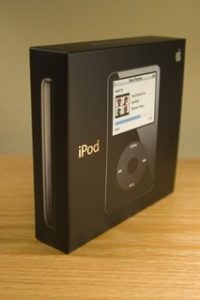Innovation versus Feature Creep
 Companies that struggle with innovation often make up for it by adding features to existing products. They succumb to “feature creep” – the gradual and continuous addition of features and functions though nothing is truly new. While it may look improved, the added features make your product more complex, difficult to use, and more costly to produce. Over time, your core customers abandon you.
Companies that struggle with innovation often make up for it by adding features to existing products. They succumb to “feature creep” – the gradual and continuous addition of features and functions though nothing is truly new. While it may look improved, the added features make your product more complex, difficult to use, and more costly to produce. Over time, your core customers abandon you.
Here is an example – the Numi toilet by Kohler. At $6400, it is promoted as the top-of-the-line toilet with lots of high-tech bells and whistles:
- Custom bidet – User can control pressure, temperature and angle.
- Tankless design; dual flush
- Motion Sensor Lid – After 90 seconds of no movement, the toilet will close.
- Seat warmer
- Foot warmer – A vent beneath the bowl blows hot air to warm your feet and the cold tile beneath them.
- Automatic seat – For male users, a motion sensor is activated by foot and causes the seat to rise and then lower when you’re away.
- LED lit back panel – Frosted glass is lit in an energy-efficient way.
- MP3 hook-up – So you never have to be without your music.
- Remote control – This touch-screen pad lets the user control all of these features from a wireless control.
- A flat white surface designed for easy cleaning.
Instead of adding features, companies can become more innovative by subtracting features. Here is an example of the Subtraction template of the S.I.T. innovation method. Kimberly-Clark Corporation, a global producer of paper-based products, launched their new Scott Natural Tube-Free toilet paper. Just as the name asserts, the rolls come without the cardboard tubes while still being able to fit on the average toilet paper holder.
From Foxnews.com:
“The idea has been around for quite some time,†said Doug Daniels, brand manger for Scott brand. “The tube doesn’t really serve any consumer purpose. But we’ve had a breakthrough in our technology that’s finally allowed us to do this.†For now, the process of taking out the tube remains a mystery, as Kimberly-Clarke won’t reveal its ground-breaking technology. Daniels says they’re keeping tight-lipped, since they might use the process for future products. But more importantly, he maintains that no cardboard tube means every single piece of toilet paper will be usable, without those last few sheets getting stuck to the roll.
Kimberly-Clarke estimates that the U.S. alone disposes of 17 billion cardboard tubes from bathroom tissue, equating to 160 million pounds of waste. To put that into perspective, that’s roughly the weight of 250 Boeing 747s and enough tubes to circle the earth’s equator 40 times. Daniels says that this marriage of consumer and ecological advantages will pave the way for the success of the tubeless initiative.”
Don’t miss an article (2,600+) – Subscribe to our RSS feed and join our Innovation Excellence group!
 Drew Boyd is Assistant Professor of Marketing and Innovation at the University of Cincinnati and Executive Director of the MS-Marketing program. Follow him at www.innovationinpractice.com and at https://twitter.com/drewboyd
Drew Boyd is Assistant Professor of Marketing and Innovation at the University of Cincinnati and Executive Director of the MS-Marketing program. Follow him at www.innovationinpractice.com and at https://twitter.com/drewboyd
NEVER MISS ANOTHER NEWSLETTER!
LATEST BLOGS
The Importance of Packaging
Let’s talk about packaging. Packaging can be thought about in many different ways, but if we think purely about the purpose of packaging first, we find the purpose is to: contain the product, communicate product information, …
Read MoreWhy the World Cup is a Big Deal
After living overseas in Germany and England and now coming back to the United States, I have a completely different perspective on Football (or Soccer as we call it in the United States). With the World Cup in full swing, I thought I would tackle the subject of Football and why it is the most popular sport in the world.
Read More


